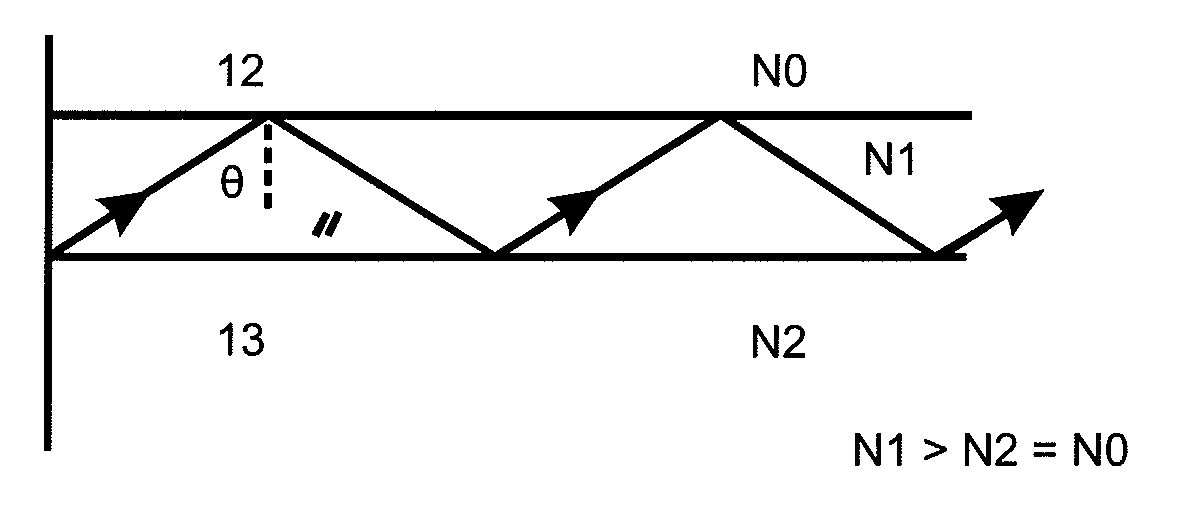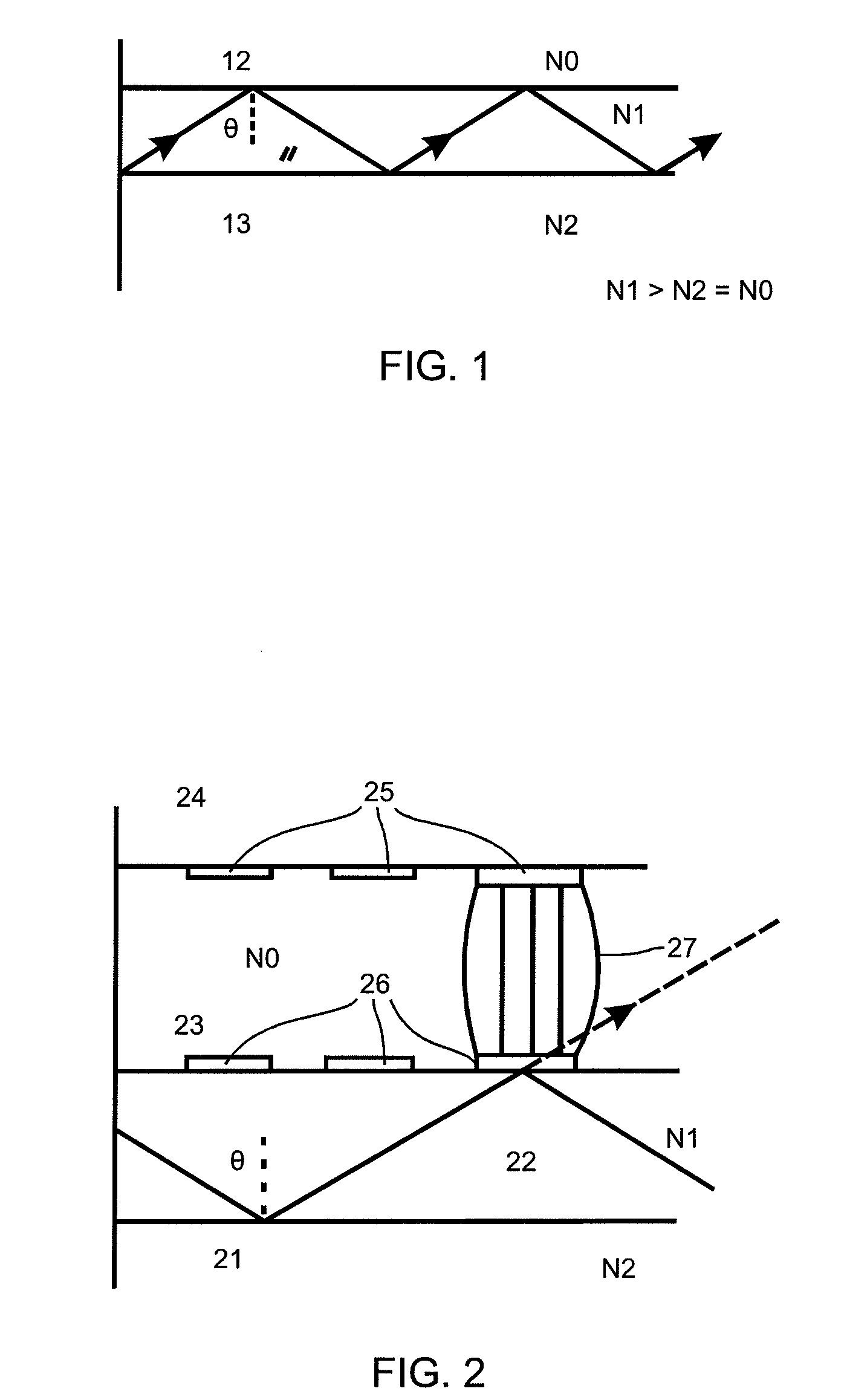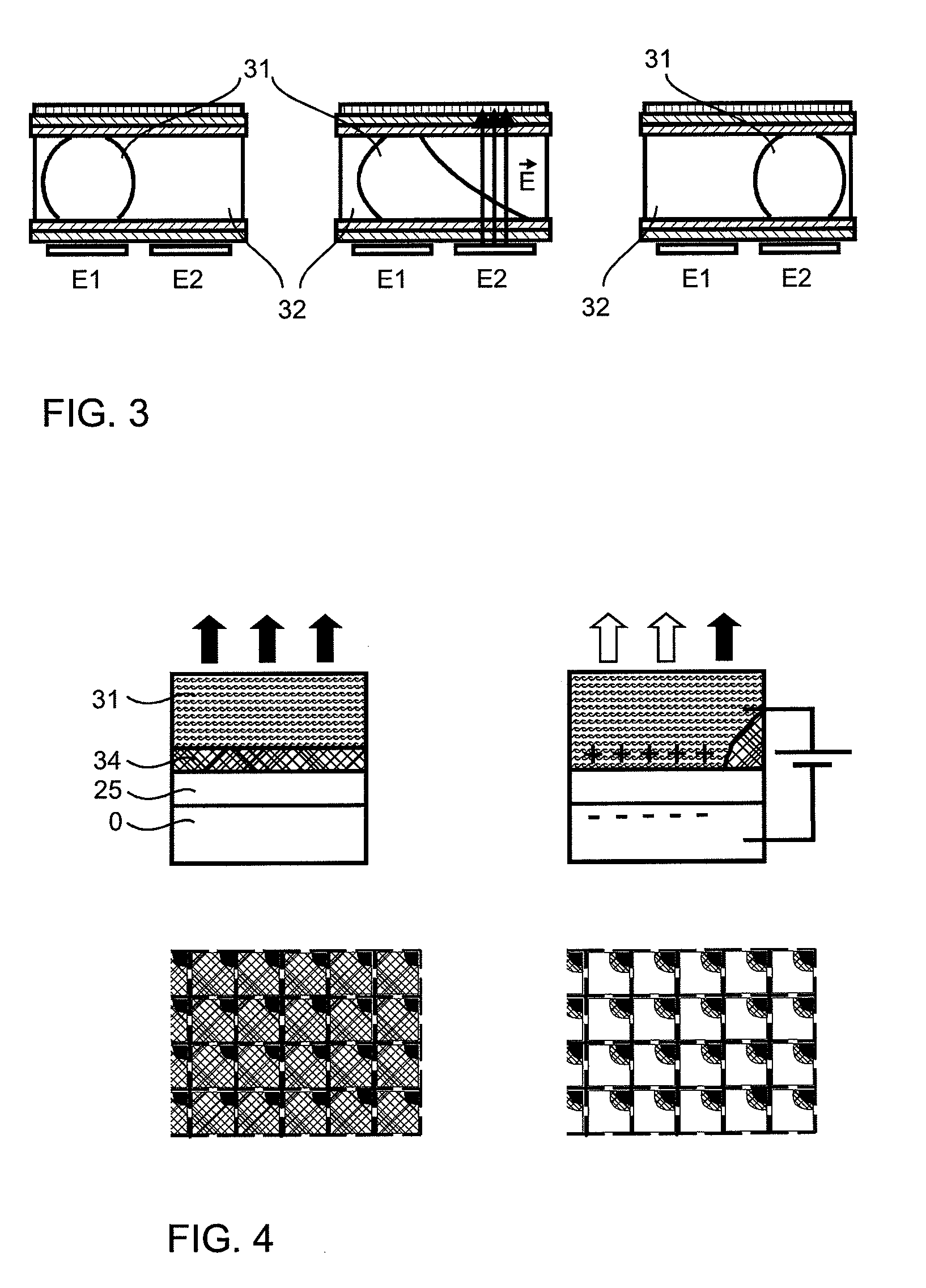3D Display Device with Controllable Device for Tracking Visibility Regions
a display device and visibility region technology, applied in the field of three-dimensional representation of the 3d scene, can solve the problems of low brightness efficiency, large demands on coherence and representation quality, and inability to generate light waveguide types
- Summary
- Abstract
- Description
- Claims
- Application Information
AI Technical Summary
Benefits of technology
Problems solved by technology
Method used
Image
Examples
first embodiment
[0068]A thus designed waveguide forms the basis for a display device according to this invention, with which a device for tracking light and thus for tracking a visibility region generated by that light can be realised when the observer moves laterally and / or horizontally.
[0069]The tracking device in the display device has the following function: The LC layer with the birefringent material is connected with spatially structured, transparent control electrodes. The control electrodes are arranged on at least one face of the LC layer as a matrix or in stripes in the cladding, thus defining potential output coupling points in the LC layer. A continuous electrode is disposed on the other face of the LC layer, very much like in conventional LC display panels. If a voltage is applied to at least one control electrode, then the total reflection is cancelled between this electrode and the opposite electrodes in this position in the matrix or striped arrangement of control electrodes, thus c...
second embodiment
[0080]This principle forms the basis of a second embodiment according to this invention of the display device with a controllable tracking device, which serves to illuminate a SLM and to generate a visibility region. This embodiment will be described in more detail below.
[0081]An arrangement of droplets of one liquid in a second liquid forms the cladding of a waveguide.
[0082]The refractive index difference between the cladding and the core is adjusted by choosing liquids with a suitable refractive index such that the total reflection is only cancelled in the region of the droplet, so that an output coupling point is generated there and that light can leave the waveguide. The displacement of the droplet does thus not serve to turn a pixel on or off, as in [3], but to move an output coupling point from an old to a new position.
[0083]In contrast to the prior art, electrodes are not combined in pairs to form a pixel, but each individual electrode of a matrix or striped arrangement defin...
third embodiment
[0100]According a third embodiment according to this invention of the display device, variable output coupling points can be created by switching on and off the control electrodes in application of this principle.
[0101]Like in the first embodiment, the electrodes can be arranged in a matrix or in stripes in the waveguide, so that the output coupling points exhibit an according pattern. An output coupling point is turned on by applying a voltage to one of the electrodes.
[0102]The dielectric 25 of the EW cells can serve as the core of the waveguide, as described above. Alternatively, the dielectric can be a very thin layer disposed between the core and the liquids.
[0103]Deviating from the prior art described above, the oil 34 is not absorbing, but transparent. However, the chemical composition of the oil is chosen such that it has a lower refractive index than the core of the waveguide, so that total reflection occurs between the core and the oil in this arrangement.
[0104]If the oil f...
PUM
 Login to View More
Login to View More Abstract
Description
Claims
Application Information
 Login to View More
Login to View More - R&D
- Intellectual Property
- Life Sciences
- Materials
- Tech Scout
- Unparalleled Data Quality
- Higher Quality Content
- 60% Fewer Hallucinations
Browse by: Latest US Patents, China's latest patents, Technical Efficacy Thesaurus, Application Domain, Technology Topic, Popular Technical Reports.
© 2025 PatSnap. All rights reserved.Legal|Privacy policy|Modern Slavery Act Transparency Statement|Sitemap|About US| Contact US: help@patsnap.com



